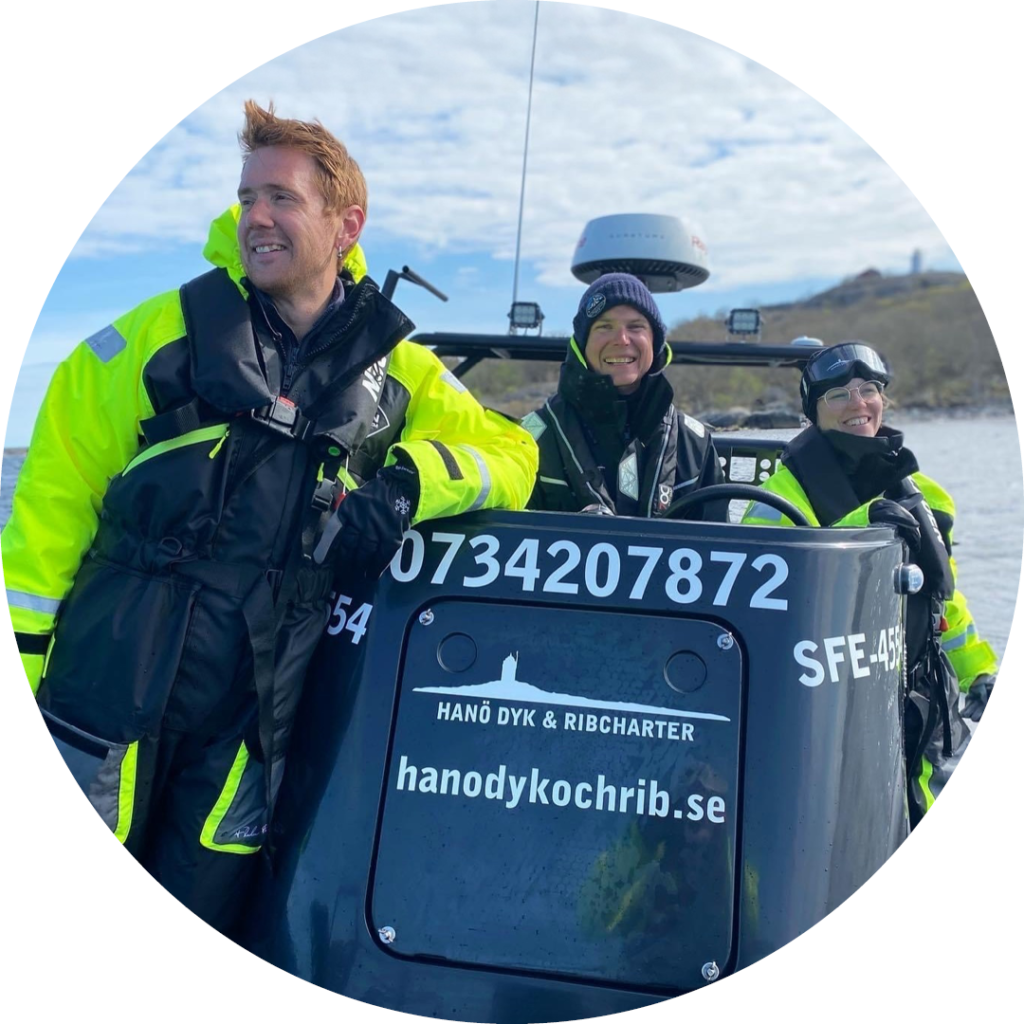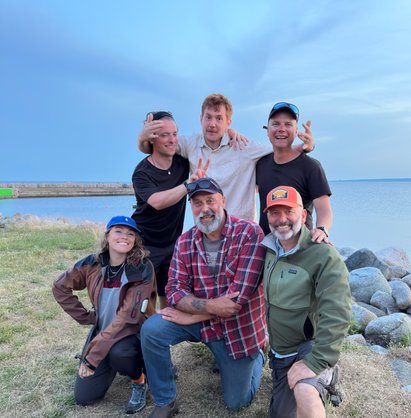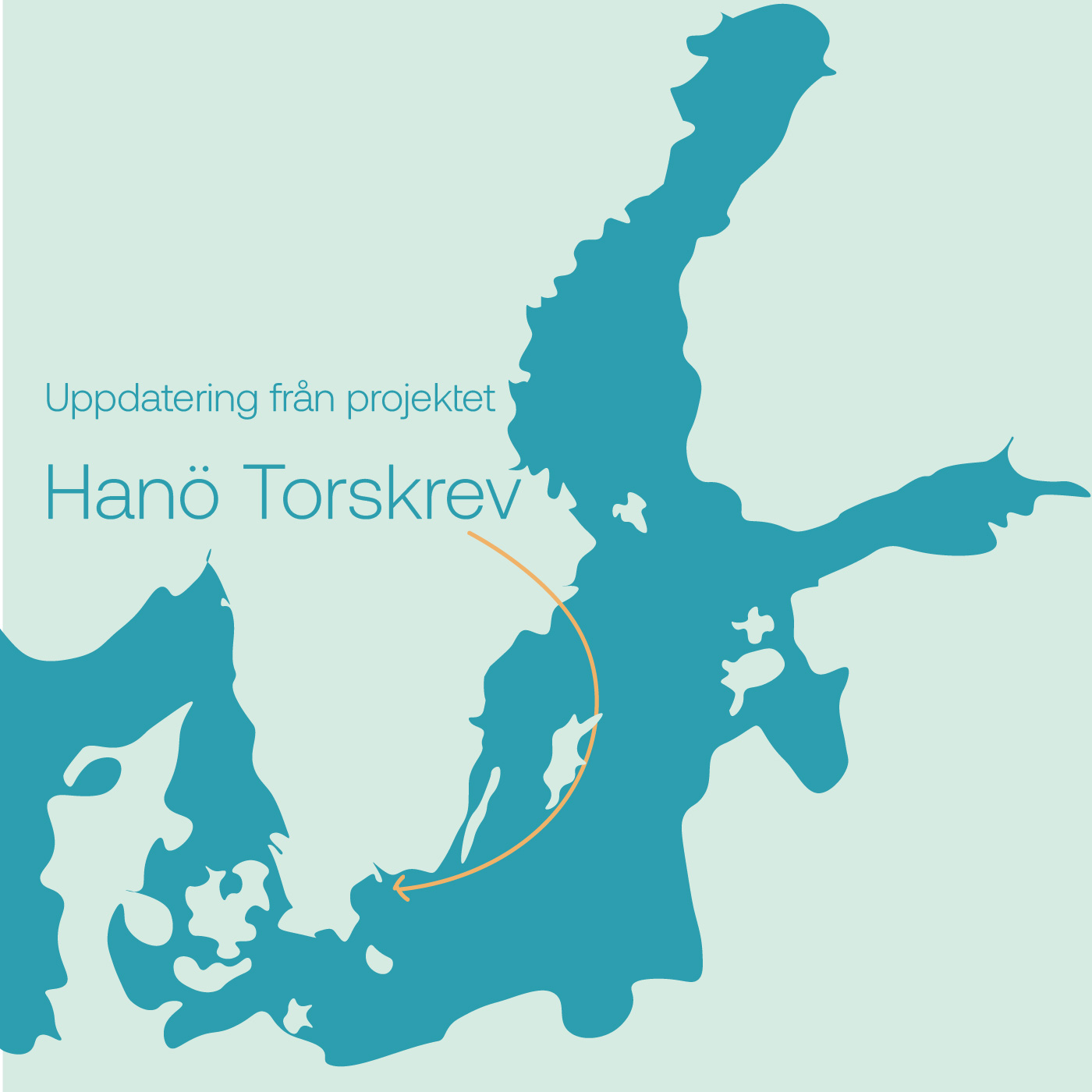Since 2022, BalticWaters has been funding research for a living Baltic Sea. One of the first projects to receive support was Hanö Torskrev – a local initiative to help restore the cod population in the Hanö Bay off the coast of Blekinge. Now, three years later, BalticWaters is back in Hanö – curious to find out what has happened beneath the surface and what ripple effects the project has generated.
Off the coast of Hanö, on the Blekinge coast, the waters were once bustling with cod. Here, fish was more than just an important resource – in the coastal communities around Hanö Bay, cod fishing shaped both the local economy and people’s identity. But years of overfishing and poor management have taken their toll. Today, cod stocks have declined sharply, and since 2019, all targeted cod fishing has been banned.
But the recovery of cod stocks is slow. With a desire to take action and spread hope for change, three local actors came together – all affected in different ways by the disappearance of cod. Together, they initiated the Hanö torskrev project, with the aim of placing artificial reefs in Hanö Bay to support the recovery of cod stocks.
How can artificial reefs support cod recovery?
Artificial reefs, such as shipwrecks, have long been used to benefit fish and other organisms. The reefs in the Hanö Bay consist of concrete blocks with cavities of various sizes, stacked to create structures where fish and other organisms can thrive. These cavities provide a place where cod can seek shelter from predators and where they can rest and conserve energy. The hope is that the reefs will increase the survival rate of young cod, which will then reproduce and contribute to the recovery of cod stocks in the area.
Video: Hanö Torskrevsförening
A tourist guide, a restaurant owner and a former fisherman
We meet Hampus Södergren, tourist guide and one of the initiators behind the project. As a guide, he works close to the sea every day, and it was on the island where he works that he came into contact with Hannes Kindberg, who runs a tavern in the archipelago.
When the conversation turned to the situation of the cod, they quickly discovered that they shared a common commitment.
‘The difference was that I wanted to dive and look at the cod, while Hannes wanted it in his fryer,’ says Hampus with a laugh.
The conversation led to a project in Bohuslän – Fjordtorsk – where artificial reefs have been placed to support the local cod population. The idea resonated with them, and they began to form a plan for something similar in their home waters.

Hannes Kindberg and Hampus Södergren, together with Josefine Larsson from the Marine Centre in Simrishamn. Photo: Niklas Eriksson, Swedish Radio.
‘We started reading up on the subject, gathering knowledge and contacting the people behind Fjordtorsk. At the same time, we realised that the conditions in Hanöbukten are different from those on the west coast, so we adapted the project to our area’, explains Hampus.
They also gained a third important piece of the puzzle: Lasse, a former professional fisherman with extensive knowledge of the area.
‘Lasse knows this sea like the back of his hand. He knows where the cod used to gather and how the stock has changed over time, which has been invaluable to the project’, says Hampus.

The Hanö Torskrev project group consists of researchers from Lund University, the Simrishamn Marine Centre and the Hanö Torskrevsförening. Photo: André Julinder, Sölvesborg Municipality
Cameras document the presence of cod at the reefs
To ensure the scientific basis of the project, Lund University and the Marine Centre in Simrishamn were brought into the project.
‘We wanted to understand whether the reefs actually serve any purpose,’ says Anders Persson, associate professor at the Department of Biology in Lund and responsible for the scientific follow-up of the project.
Instead of traditional test fishing, the researchers chose to monitor the reefs with underwater cameras. Cameras with long battery life were placed at the reefs and in control areas without reefs. In addition, underwater drones have recorded supplementary video material. Data on salinity, temperature and currents has also been collected to better understand what determines the presence of cod.
The researchers are currently analysing all the hours of video footage, which is a time-consuming task to say the least. But based on what they have seen so far, the outlook is positive.
– Our analysis so far shows that there are more cod at the reefs than in the control areas. We can also see that some individuals return to the same holes, which indicates that they have found a permanent place where they can seek shelter,” says Anders.
Although the project is small in the grand scheme of the Baltic Sea, Anders sees great potential in the reefs – precisely because they provide shelter for larger fish species that play a crucial role in the ecosystem.
‘It may not change the entire Baltic Sea, but we have shown that something can be done. And if we succeed in bringing back the most valuable fish, then we will have come a long way,’ he concludes hopefully.
The reef has plenty of cavities of various sizes where cod and other species can seek shelter and rest. Video: Hanö Torskrevsförening
A tool for strengthening local engagement
The main objective of the reefs has been clear from the outset: to contribute to the recovery of cod stocks. But the project has also had another important task – to raise awareness of the Baltic Sea’s marine environment and spread commitment to a living Baltic Sea.
‘For us, communication has been just as important as the reefs themselves. We wanted to show that there is still life in the Baltic Sea – and hopefully inspire hope and action in those who see it,’ says Hampus Södergren.
The project has reached a wide local audience through high-resolution underwater films, shown through VR glasses, lectures and meetings, among other things. The response has been huge and mostly positive – but it hasn’t been easy.
In the Bay of Hanö, where fishing has been a big part of life for generations, the project got some strong reactions at first.
There was a lot of scepticism. Many people have their own experiences and strong opinions about what went wrong – and how it should be resolved, says Hampus.
Over time, however, the project became a place for dialogue rather than conflict.
‘A common misunderstanding was that the reefs meant a fishing ban. But the project is not about stopping fishing; even we dream that one day it will be possible to fish again. But to get there, the stocks need to recover – and that’s where the reefs can play an important role,’ says Hampus.
And perhaps that is where the strength of the project lies: in the meeting between science, local knowledge and the will to change.
‘Once we got past the initial hurdles, it became clear that we all want the same thing: a living sea – and a chance for the cod to recover,’ says Hampus.

During the spring, viewers could follow the journey of the Hanö cod in SVT’s Fiskarnas rike (The Kingdom of Fish). Watch it here!
Photo: Hanö torskrevsförening

The Hanö Torskrev project is being carried out by Lund University, the Marine Centre in Simrishamn Municipality and Hanö Torskförening. Through BalticWaters’ program to fund research projects and pre-studies, the project was awarded a grant of SEK 995,000 for the scientific part of the project.
Would you like to know more about Hanö Torskrev? Visit their website www.hanotorskrev.se

